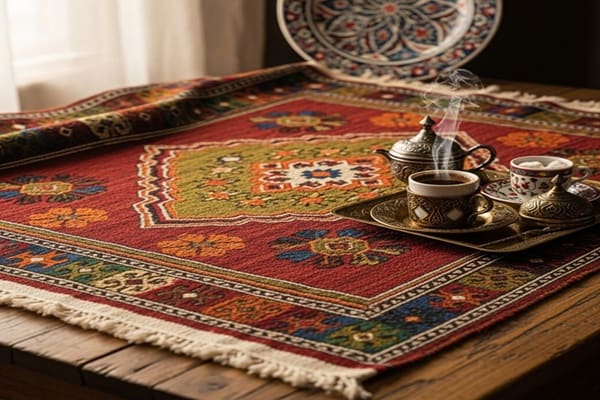Çeciir: A Symbol of Turkish Hospitality and Culture
Share your love

In the world of traditional Turkish cuisine, few dishes carry the soul and story of a culture quite like çeciir. If you’ve never heard of it, you’re not alone—but once you do, you’ll wonder how something so rich in flavor, history, and health benefits has stayed under the radar for so long.
At first glance, çeciir might seem like a simple chickpea stew. But dig a little deeper, and you’ll find that this humble dish is a powerful reflection of Turkey’s culinary history, regional diversity, and even its commitment to sustainable farming. From family kitchens to bustling street stalls, çeciir is more than a meal—it’s a cultural experience.
Let’s explore the roots, flavors, and modern-day magic of çeciir in a way that feels more like chatting with a foodie friend than reading a recipe book.
What Is Çeciir, Really?
At its core, çeciir is a savory chickpea-based dish that has been passed down through generations in Turkey. Its name may vary slightly across regions, but its heart remains the same—warm, hearty, and deeply comforting.
The dish is centered around chickpeas, also known as garbanzo beans, which have been grown in the region for thousands of years. In fact, the use of chickpeas in Anatolian cooking dates back to ancient civilizations, including the Ottomans, who treasured them for both their taste and nutrition.
A Simple Yet Soulful Recipe: How Traditional Çeciir Is Made
One of the reasons çeciir has remained a staple for centuries is because of how beautifully simple—and deeply flavorful—it is to make. The process isn’t complicated, but it does require a little patience and love.
Ingredients:
-
Dried chickpeas
-
Onions
-
Garlic
-
Tomato paste
-
Olive oil
-
Broth (vegetable or chicken)
-
Spices: cumin, red pepper flakes, oregano, bay leaves
Instructions:
-
Soak the chickpeas overnight to soften them and cut down cooking time.
-
Drain and rinse the chickpeas the next morning.
-
In a large pot, sauté finely chopped onions and garlic in olive oil.
-
Add tomato paste and stir until aromatic.
-
Pour in your soaked chickpeas and cover with broth.
-
Add your spices and simmer gently until the mixture thickens into a hearty stew.
-
Serve warm with rice, fresh bread, or even a drizzle of lemon juice and a sprinkle of parsley or paprika on top.
It’s the kind of dish that fills your kitchen with an aroma so good, even your neighbors will get curious.
Regional Twists That Make Each Bowl Unique
One of the most beautiful things about çeciir is how it changes from place to place across Turkey. Just like other iconic dishes (think pizza in Italy or curry in India), every region adds its own personality.
A few examples:
-
Black Sea Region: Some locals add corn kernels or fresh herbs like dill, giving it a lighter, earthier feel.
-
Central Anatolia: You’ll often find çeciir served alongside rich meat stews or even cooked directly with lamb for added depth.
-
Mediterranean Coast: Expect hints of citrus or seafood, thanks to the coastal influence and availability of fresh ingredients.
This adaptability is a big part of what keeps çeciir relevant. No matter the ingredients on hand, there’s always a version that fits the region—and the moment.
Why Çeciir Means More Than Just Food
In Turkey, food is about connection. It’s about families gathering around the table, sharing stories, laughter, and love. Çeciir isn’t just a meal; it’s an experience passed down through generations.
Many families have their own version of çeciir, and the act of preparing it together is almost ceremonial. It becomes more than cooking—it’s a ritual of bonding, storytelling, and honoring traditions.
And if you ever visit a Turkish home, don’t be surprised if your host serves you çeciir. It’s often one of the first dishes brought out to welcome guests—a symbol of hospitality and generosity.
A Nutritional Powerhouse in a Simple Bowl
Here’s where things get even more impressive.
While çeciir wins on tradition and taste, it also earns major points for being incredibly good for you. Chickpeas are rich in protein, fiber, and essential minerals like iron, potassium, magnesium, and folate.
Some key health benefits:
-
Supports digestion with high fiber content
-
Helps manage blood sugar levels
-
Lowers cholesterol and improves heart health
-
Aids in weight management by keeping you full longer
-
Packed with antioxidants, which help fight inflammation
Whether you’re vegetarian, vegan, or just trying to eat a little cleaner, çeciir is a dish that checks all the boxes without sacrificing flavor.
How Çeciir Fits into Modern Cooking
You might think a dish this traditional wouldn’t have a place in today’s trendy kitchens—but you’d be wrong. Çeciir is actually incredibly versatile and trendy, especially with the growing popularity of plant-based diets.
Here’s how people are using çeciir and chickpeas in modern cuisine:
-
Blended into dips or hummus-style spreads
-
Used as a meat substitute in vegan stews and curries
-
Ground into gluten-free chickpea flour for baking
-
Roasted for crispy, healthy snacks
-
Added to smoothies for a boost of protein
Chefs and home cooks alike are getting creative, blending çeciir’s rich heritage with today’s health-conscious food culture.
Also Read : The Private World of Henry Elkind: A Legacy Beyond Hollywood
Supporting Local Farmers with Every Bite
Beyond its flavor and nutrition, çeciir is part of a larger story about sustainability and community support.
In Turkey, many small farmers—especially in rural and coastal regions—grow chickpeas using traditional, eco-friendly farming methods. That means no harsh chemicals or industrial processing. Just naturally-grown, nutrient-rich ingredients.
By choosing dishes like çeciir, you’re not only eating better—you’re also helping preserve Turkey’s agricultural traditions and supporting the livelihoods of local farming communities.
Where to Experience Çeciir in Real Life
Want to try çeciir the authentic way?
You’ll find it everywhere from local street vendors in Istanbul to home kitchens in small Anatolian villages. In cities, it’s often served as a quick bite, especially during colder months when people crave something warm and filling. The smell alone—onions, tomato, and chickpeas simmering together—is enough to draw a crowd.
But the most unforgettable çeciir moments? They happen at family gatherings, where generations cook and eat together, sharing stories over steaming bowls. That’s where the true magic of this dish lives.
Final Thoughts: Why Çeciir Deserves a Spot on Your Table
Çeciir is one of those rare dishes that manages to do it all. It’s simple to make, deeply satisfying, incredibly nutritious, and filled with meaning. Whether you’re drawn to it for the flavor, the health benefits, the cultural history, or the sustainability factor, çeciir is a meal with a story worth sharing.
So next time you’re looking for something new to cook—something with heart, heritage, and health in every bite—give çeciir a try. You won’t just be cooking a dish; you’ll be carrying on a tradition that has brought people together for centuries.







